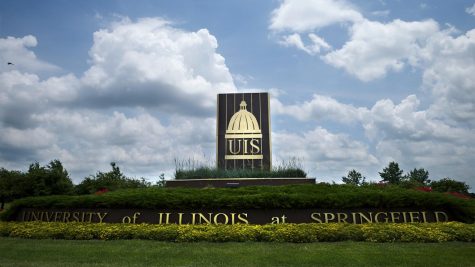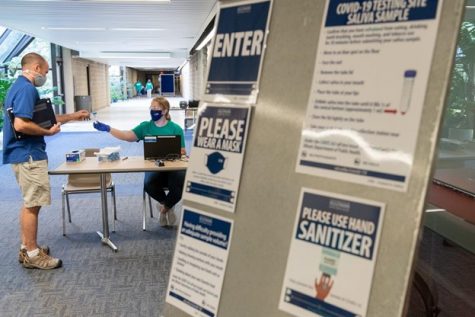The American Jobs Plan and State of the U.S. Economy

Photograph courtesy of newsweek.com
In 2019, the U.S. unemployment rate had dropped to just 3.5%. The ongoing pandemic has since rendered this a distant memory. In April 2020, the nation’s unemployment rate soared to nearly 15%, the worst month since the Great Depression. The polarizing debate over whether or not pandemic regulations are worth the economic turmoil has plagued the U.S. throughout the past year. After slow but consistent recovery, the unemployment rate has fallen back to 6% as of March 2021.
Three stimulus packages have been passed by Congress during the pandemic in an attempt to limit mercantile disruption and provide assistance to those affected by shutdowns. However, is more government spending imperative to economic prosperity following the COVID-19 recession?
Just a few months into office, President Joe Biden has already set his sights on one of the largest infrastructure packages in history. The American Jobs Plan (AJP) is the first part of Biden’s two-part, four trillion dollar plan to overhaul the current U.S. economy. The AJP is an $2,300,000,000,000 trillion package designed to aid the following:
- Workforce development
- Manufacturing and small business
- Research and development and job training
- Home healthcare workers
- VA hospitals
- Public schools and community colleges
- Public housing
- Clean energy
- Broadband deployment
- Water systems
- Transportation and resiliency
The American Jobs Plan shares significant similarities to a plan that President Biden was a part of in 2009. The American Recovery and Reinvestment Act (ARRA), a stimulus-type package consisted of government spending, tax cuts and loan guarantees; targeted alternative energy sourcing, infrastructure, education, small businesses and R&D. The American Jobs Plan under current estimates would cost nearly three times that of the ARRA. However, the White House looks past topical economic recovery, stating the AJP would “reimagine and rebuild a new economy.”
Democrats have sought to use their majority to the best of their advantage since they secured landmark Senate wins this past November. Signed back in mid-March of 2021, the $1,900,000,000,000 American Rescue Plan (ARP) was passed through Congress under the parliamentary procedure of reconciliation. Reconciliation is not a new concept. First used in 1980, 21 bills, including the Affordable Care Act as well as the Tax Cuts and Jobs Act, have been enacted through this process. It seems likely that this tool will be needed to pass the American Jobs Plan due to an otherwise resistant filibuster.
According to Matthew Geras, political science professor at the University of Illinois Springfield, “it will be up to the Senate parliamentarian to decide whether Democrats can use the budget reconciliation process for a second time this year. So far, Elizabeth MacDonough, the Senate parliamentarian, seems to have indicated that the Senate can pass a revision to their previous budget reconciliation bill, which will allow the Democratic Party to include some of their new priorities.”
The GOP has been unsupportive of the AJP. Senate Minority Leader Mitch McConnell has called the American Jobs Plan a “missed opportunity” by the Biden Administration. Republicans see the plan as too broad in scope and that the AJP is nowhere near your traditional infrastructure plan. The Senate GOP faced a similar conundrum with former President Donald Trump, whose long-awaited “infrastructure week” was thwarted by his political colleagues for being too “rich.” Trump’s plan would have invested $1,000,000,000,000 toward infrastructure.
Any time massive government expenditures are introduced, questions arise over how to pay for them. In addition to President Biden’s infrastructure plan, a tax strategy would raise the corporate tax rate to 28%, repeal components of the Tax Cuts and Jobs Act on higher-income filers, impose a 12.4% Social Security tax on those making over $400,000 a year, temporarily increase the Child Tax Credit, and more. Biden’s tax plan amounts to an estimated $2,800,000,000,000 in dynamic revenue by 2030.
Fear that voluminous government borrowing and spending over the last year will lead to a substantial rise of inflation has begun to set in. However, are these fears justified? University of Illinois Springfield Economics Professor Matthew Brown stated, “Consumer prices are widely expected to increase in the near term as previously postponed consumer spending picks up, the pandemic eases, and consumer behavior returns to pre-pandemic patterns. Increased government spending will likely contribute to that phenomenon, but it shouldn’t lead to longer term inflation in the sense of decreased consumer purchasing power if it is a one-time spending increase.” Nevertheless, Brown goes on to say, “If the Federal Reserve tightens monetary policy in response to increasing inflation, it could also offset any economic stimulus from the increase in government spending.”
According to the Consumer Price Index, consumer prices rose 0.6% in March from February and a 2.6% rise since March 2020. This is the largest single-month rise since 2012. The extent and longevity of this quick rise in consumer prices is still largely unknown.
As vaccine rollout has become more readily available, signs of economic boom have already begun to surface. Retail sales soared 9.8% in March, according to a report from the Department of Commerce. People are ready for normalcy. The Federal Reserve estimates that the unemployment rate could fall under 4% in 2022. Despite Democrats’ will to exercise their majority, is economic overhaul necessary? Regardless of estimates and studies, the American Jobs Plan tackles care infrastructure where benefits do not always show up in statistical data. However, only time will tell how areas like unemployment, inflation and the deficit will fare.












